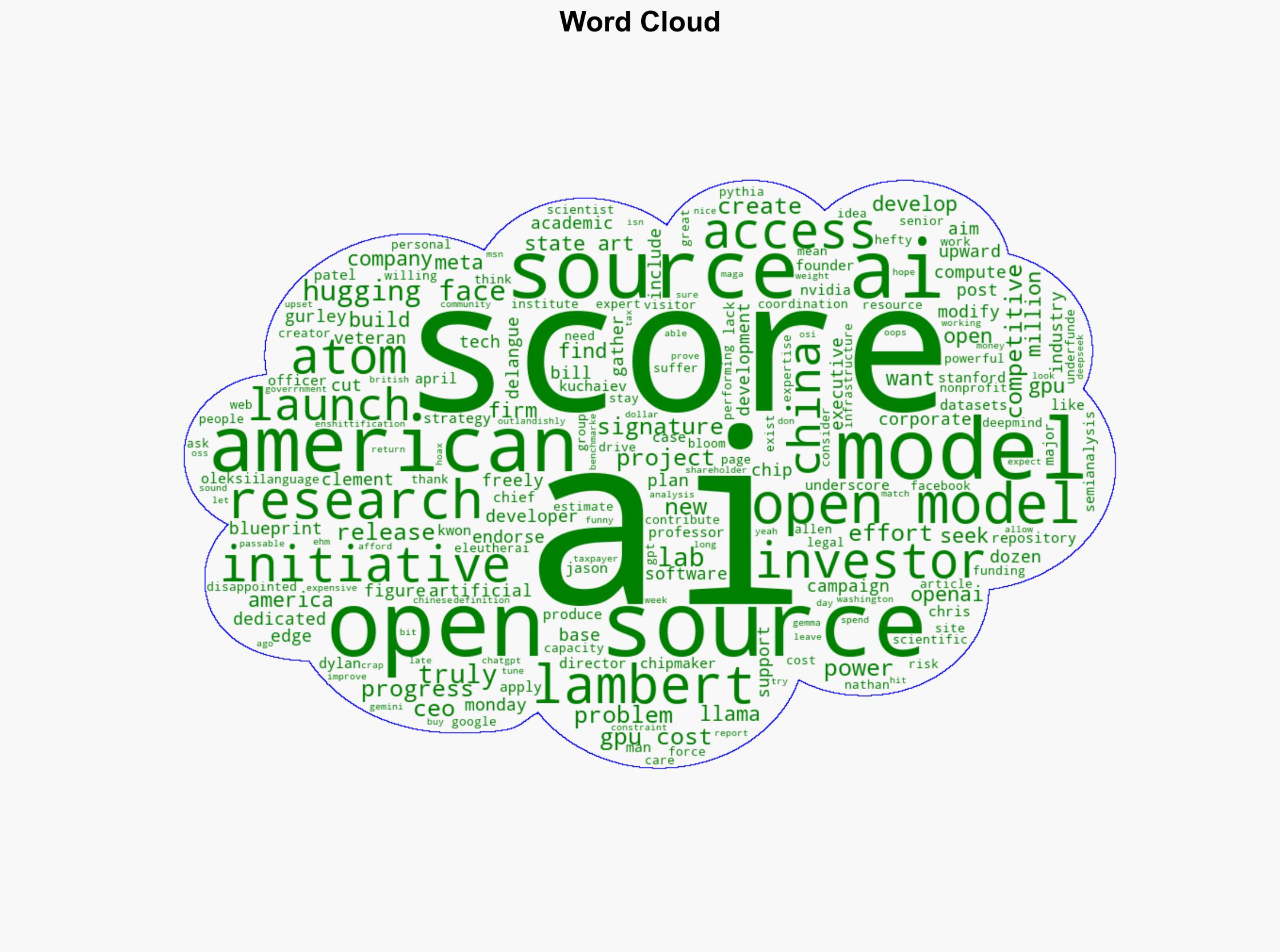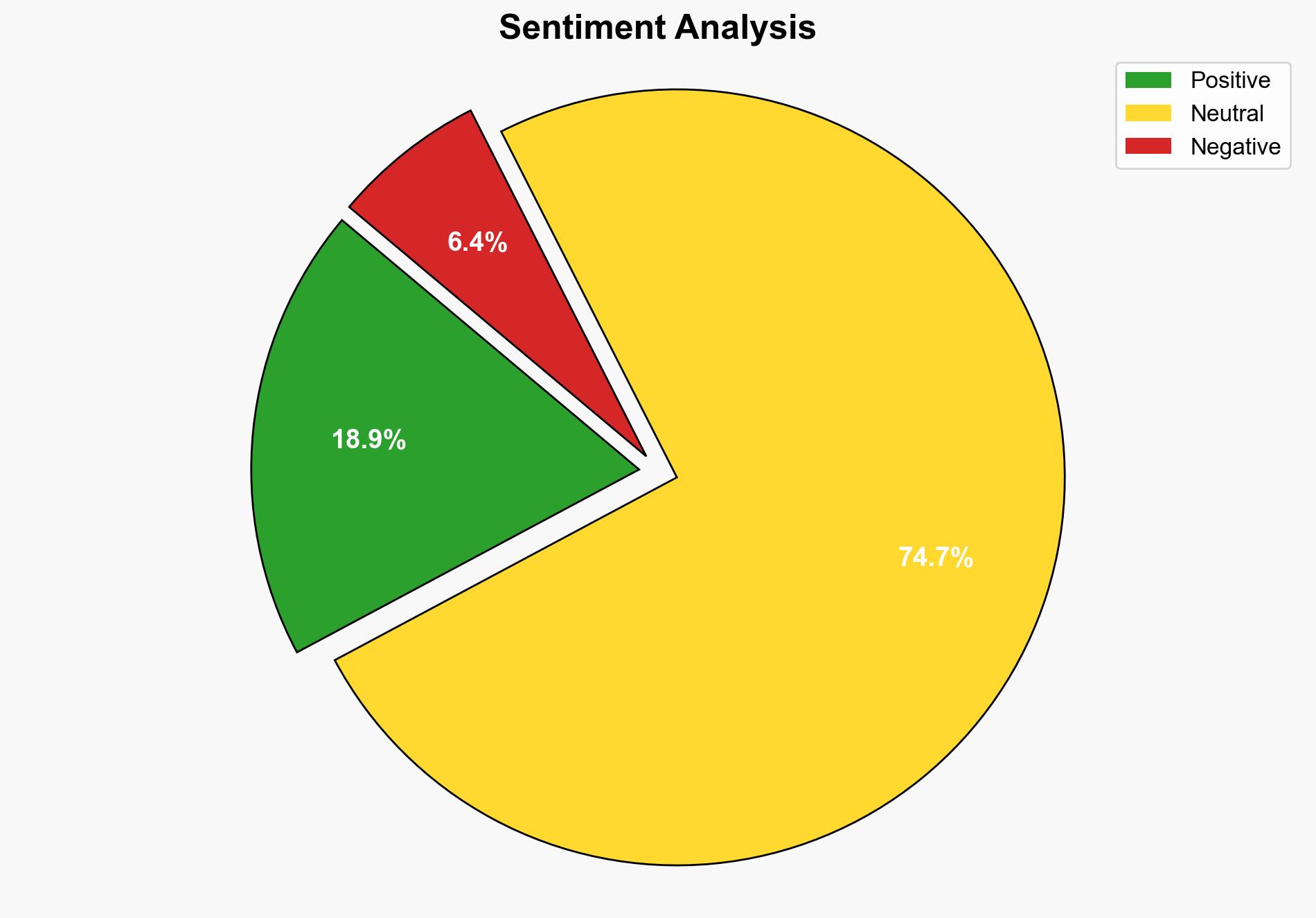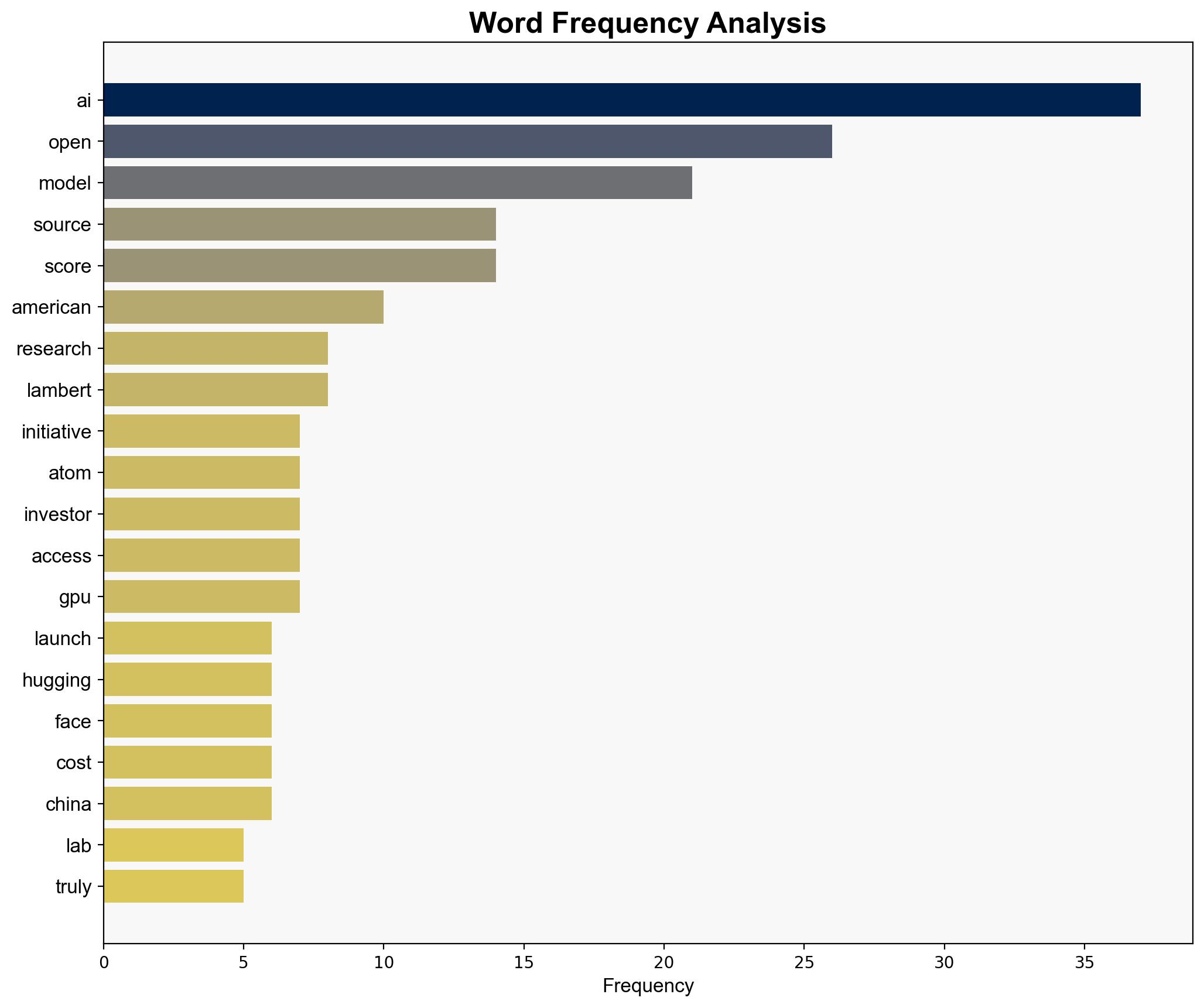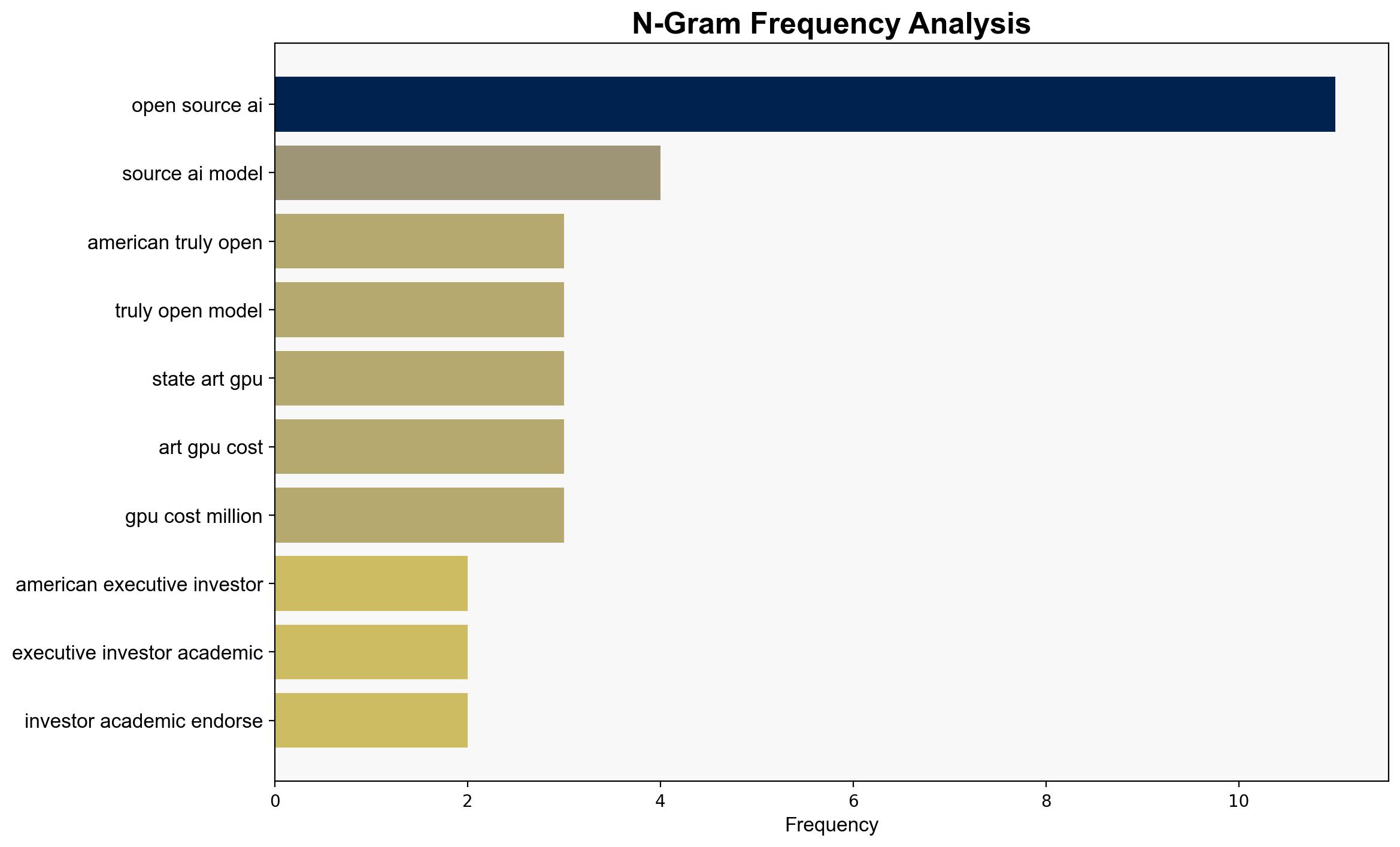Initiative Seeks AI Lab to Build ‘American Truly Open Models’ ATOM – Slashdot.org
Published on: 2025-08-09
Intelligence Report: Initiative Seeks AI Lab to Build ‘American Truly Open Models’ ATOM – Slashdot.org
1. BLUF (Bottom Line Up Front)
The initiative to establish an AI lab for developing “American Truly Open Models” (ATOM) is a strategic move to enhance the U.S.’s competitive edge in AI technology. The most supported hypothesis suggests that the initiative aims to counterbalance foreign advancements, particularly from China, in AI development. Confidence level: Moderate. Recommended action: Support the initiative by facilitating partnerships and securing funding to ensure its success.
2. Competing Hypotheses
1. **Hypothesis A**: The ATOM initiative is primarily driven by the need to maintain U.S. competitiveness in AI by creating open-source models that can rival those developed by Chinese firms.
2. **Hypothesis B**: The initiative is a response to internal dissatisfaction with the current pace and coordination of open-source AI development in the U.S., aiming to streamline efforts and resources.
Using the Analysis of Competing Hypotheses (ACH) 2.0, Hypothesis A is better supported due to the emphasis on international competitiveness and the involvement of high-profile industry figures. Hypothesis B, while plausible, lacks the same level of external focus.
3. Key Assumptions and Red Flags
– **Assumptions**: The initiative assumes that open-source models can effectively compete with proprietary models from major tech firms and foreign entities.
– **Red Flags**: Potential over-reliance on voluntary contributions and signatures without a clear funding strategy. The initiative’s success may be hindered by legal and logistical challenges in accessing cutting-edge technology.
4. Implications and Strategic Risks
– **Economic**: Successful implementation could boost the U.S. tech sector and create new economic opportunities.
– **Cyber**: Open-source models may pose cybersecurity risks if not properly managed.
– **Geopolitical**: The initiative could escalate tensions with countries like China if perceived as a direct competitive threat.
– **Psychological**: Could inspire innovation and collaboration within the U.S. tech community.
5. Recommendations and Outlook
- Secure diversified funding sources to ensure the initiative’s sustainability.
- Establish clear legal frameworks to manage intellectual property and cybersecurity risks.
- Best Case: The initiative leads to significant advancements in AI, enhancing U.S. global standing.
- Worst Case: The initiative fails due to lack of coordination and resources, further widening the gap with foreign competitors.
- Most Likely: The initiative achieves moderate success, fostering some innovation but facing challenges in scaling and coordination.
6. Key Individuals and Entities
Bill Gurley, Clement Delangue, Chris Man, Oleksii Kuchaiev, Jason Kwon, Dylan Patel, Nathan Lambert.
7. Thematic Tags
national security threats, cybersecurity, technological competition, open-source innovation





